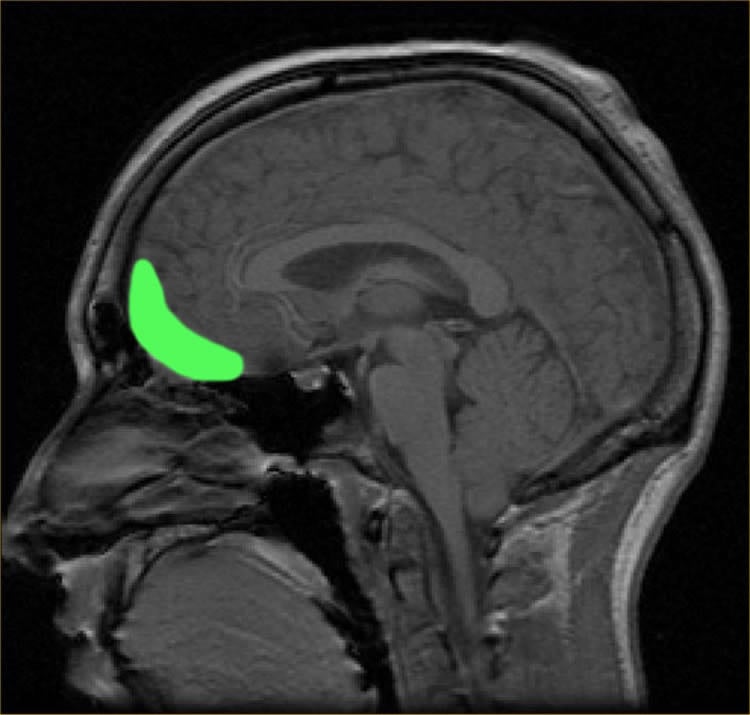We all vary in how often we become happy, sad or angry, and also in how strongly these emotions are expressed. This variability is a part of our personality and can be seen as a positive aspect that increases diversity in society. However, there are people that find it so difficult to regulate their emotions that it has a serious impact on their work, family and social life. These individuals may be given an emotional instability diagnosis such as borderline personality disorder or antisocial personality disorder.
Previous studies have shown that people diagnosed with emotional instability disorders exhibit a decrease in the volume of certain brain areas. The scientists wanted to know if these areas are also associated with the variability in the ability to regulate emotions that can be seen in healthy individuals. In the current study, 87 healthy subjects were given a clinical questionnaire and asked to rate to what degree they have problems with regulating emotions in their everyday lives. The brains of the subjects were then scanned with MRI. The scientists found that an area in the lower frontal lobe, the so-called orbitofrontal cortex, exhibited smaller volumes in the healthy individuals that reported that they have problems with regulating emotions. The greater the problems, the smaller the volume detected. The same area is known to have a smaller volume in patients with borderline personality disorder and antisocial personality disorder. Similar findings were also seen in other areas of the brain that are known for being important in emotional regulation.

“The results support the idea that there is a continuum in our ability to regulate emotions, and if you are at the extreme end of the spectrum, you are likely to have problems with functioning in society and this leads to a psychiatric diagnosis”, says Associate Professor Predrag Petrovic, first author of the study and researcher at the Department of Clinical Neuroscience, Karolinska Institutet. “According to this idea, such disorders should not be seen as categorical, that you either have the condition or not. It should rather be seen as an extreme variant in the normal variability of the population”.
Funding: The study was funded by The Swedish Research Council, Swedish Society of Medicine, Soderstrom Konigska Foundation, Osher Center for Integrative Medicine, Stockholm County Council, Knut and Alice Wallenberg Foundation, Swedish foundation for Strategic Research, and others.
Source: Karolinska Institute
Image Credit: The image is in the public domain
Original Research: Abstract for “Significant grey matter changes in a region of the orbitofrontal cortex in healthy participants predicts emotional dysregulation” by Predrag Petrovic, Carl Johan Ekman, Johanna Klahr, Lars Tigerström, Göran Rydén, Anette G. M. Johansson, Carl Sellgren, Armita Golkar, Andreas Olsson, Arne Öhman, Martin Ingvar and Mikael Landén in Social Cognitive and Affective Neuroscience. Published online July 2015 doi:10.1093/scan/nsv072
Abstract
Significant grey matter changes in a region of the orbitofrontal cortex in healthy participants predicts emotional dysregulation
The traditional concept of ‘categorical’ psychiatric disorders has been challenged as many of the symptoms display a continuous distribution in the general population. We suggest that this is the case for emotional dysregulation, a key component in several categorical psychiatric disorder constructs. We used voxel-based magnetic resonance imaging morphometry in healthy human subjects (n = 87) to study how self-reported subclinical symptoms associated with emotional dysregulation relate to brain regions assumed to be critical for emotion regulation. To measure a pure emotional dysregulation, we also corrected for subclinical symptoms of non-emotional attentional dysregulation. We show that such subclinical emotional symptoms correlate negatively with the grey matter volume of lateral orbitofrontal cortex bilaterally—a region assumed to be critical for emotion regulation and dysfunctional in psychiatric disorders involving emotional dysregulation. Importantly, this effect is mediated both by a decrease in volume associated with emotional dysregulation and an increase in volume due to non-emotional attentional dysregulation. Exploratory analysis suggests that other regions involved in emotional processing such as insula and ventral striatum also show a similar reduction in grey matter volume mirroring clinical disorders associated with emotional dysregulation. Our findings support the concept of continuous properties in psychiatric symptomatology.
“Significant grey matter changes in a region of the orbitofrontal cortex in healthy participants predicts emotional dysregulation” by Predrag Petrovic, Carl Johan Ekman, Johanna Klahr, Lars Tigerström, Göran Rydén, Anette G. M. Johansson, Carl Sellgren, Armita Golkar, Andreas Olsson, Arne Öhman, Martin Ingvar and Mikael Landén in Social Cognitive and Affective Neuroscience. Published online July 2015 doi:10.1093/scan/nsv072






